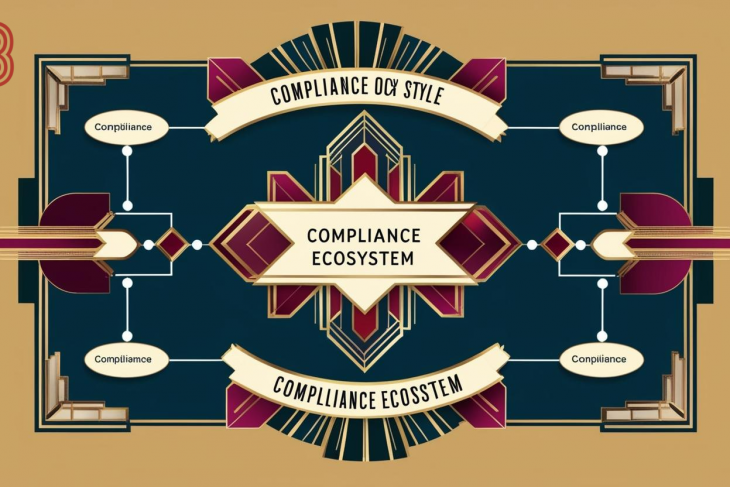
I. Introduction
In an increasingly digital world, the prevalence of cybercrime has escalated to unprecedented levels, affecting individuals, businesses, and governments across the globe. The rise of the Internet and digital technologies has opened new opportunities for criminal activity, which transcend traditional national borders. Cybercriminals exploit the global connectivity provided by the Internet to conduct illicit activities, ranging from identity theft and financial fraud to cyberattacks on critical infrastructure and cyberterrorism. As the nature of cybercrime is inherently transnational, effective legal frameworks and strategies must be put in place to address these challenges. One of the most significant steps in combating cybercrime is fostering cross-border collaboration, both in terms of legal cooperation and operational coordination. This paper explores the importance of cross-border collaboration in the fight against cybercrime, offering a detailed analysis of the challenges faced by countries in addressing this issue and the solutions that can be implemented to enhance international cooperation.
II. Defining Cybercrime
Cybercrime refers to criminal activities that involve the use of computer systems, networks, or devices to commit illegal acts. The scope of cybercrime is vast and can encompass a wide range of criminal activities, including:
1. Hacking: Unauthorized access to computer systems and networks for malicious purposes.
2. Phishing: Deceptive practices used to obtain sensitive information, such as passwords and credit card numbers.
3. Identity Theft: The illegal use of someone’s personal data, often for financial gain.
4. Cyberbullying and Harassment: Use of the Internet and digital platforms to intimidate, harass, or stalk individuals.
5. Malware Distribution: Creation and distribution of malicious software designed to harm computer systems or steal data.
6. Cyberterrorism: The use of cyberattacks to cause significant harm or disruption to national security or public safety.
Cybercrime’s transnational nature stems from the borderless nature of the Internet. Criminals can launch attacks from any corner of the globe, often targeting victims in multiple jurisdictions. As a result, traditional national legal systems are often ill-equipped to address such crimes effectively. This issue underscores the necessity for international cooperation and collaboration in tackling cybercrime.
III. Challenges in Combating Cybercrime
Several challenges complicate efforts to combat cybercrime, especially when viewed through the lens of international law and cooperation:
A. Jurisdictional Issues
One of the most significant challenges in addressing cybercrime is jurisdictional complexity. Cybercriminals often operate in countries different from the victims and the location of the crime itself. A cybercrime originating in one country may affect individuals or entities in several other countries. The Internet does not recognize national borders, making it difficult for law enforcement agencies to assert jurisdiction over cybercriminals who operate across multiple jurisdictions. As a result, international cooperation becomes critical to investigate and prosecute cybercriminals.
B. Differing Legal Frameworks
Another challenge lies in the varying legal frameworks and approaches to cybercrime across countries. Different jurisdictions may have different laws, definitions of cybercrime, and procedures for investigating and prosecuting crimes. For example, some countries may prioritize protecting citizens’ privacy and require strict safeguards before data can be shared across borders. Others may have more lenient laws that allow for easier access to data for law enforcement purposes. These differences can create barriers to effective cross-border collaboration, as countries may be hesitant to share information or cooperate in investigations that may violate their own national laws.
C. Lack of Expertise and Resources
Cybercrime investigations often require specialized knowledge and technical expertise. Many countries, particularly developing nations, lack the resources and trained personnel needed to effectively investigate and combat cybercrime. In such cases, collaboration with more technologically advanced nations is essential to overcome these limitations. However, the disparity in resources between nations can create significant imbalances in the ability to respond to cyber threats.
D. Political and Diplomatic Barriers
International collaboration on cybercrime may also be hindered by political and diplomatic considerations. Some nations may be unwilling to cooperate with others due to geopolitical tensions or conflicting national interests. In certain cases, countries may be reluctant to assist in investigations that could lead to the prosecution of individuals or entities within their own jurisdiction. Moreover, state-sponsored cyberattacks, such as those carried out by governments or intelligence agencies, present an additional layer of complexity, as some nations may be unwilling to expose or confront the perpetrators.
IV. The Importance of Cross-Border Collaboration
Despite the challenges, cross-border collaboration is crucial in the fight against cybercrime. The following points outline the reasons why international cooperation is indispensable:
A. Global Nature of Cybercrime
As noted, cybercrime is inherently global. Cybercriminals can launch attacks from any country, and their activities can affect victims worldwide. For example, a hacker in one country could breach a financial institution’s systems in another country, potentially causing millions of dollars in losses. The victims of such attacks may be located in yet another country. In such cases, no single jurisdiction can adequately address the crime without the assistance of other nations. Cooperation across borders is essential to coordinate efforts, share intelligence, and ensure that cybercriminals are apprehended and held accountable.
B. Shared Resources and Expertise
Cybercrime investigations often require advanced technical expertise, specialized tools, and resources that many countries may not have access to domestically. Cross-border collaboration allows nations to pool their resources and expertise to combat cybercriminal activity more effectively. For example, the establishment of joint task forces and collaborative initiatives between law enforcement agencies from different countries can improve the efficiency of investigations and increase the likelihood of successful prosecution. International cooperation also enables countries to share best practices and knowledge regarding the most effective methods for preventing and responding to cybercrime.
C. Harmonization of Legal Frameworks
International collaboration can help harmonize legal frameworks and create a more consistent approach to cybercrime. While different countries may have varying laws and regulations regarding cybersecurity and criminal activity, international treaties and agreements can provide a framework for standardized definitions and procedures. For example, the Budapest Convention on Cybercrime (2001), developed by the Council of Europe, provides a common legal framework for addressing cybercrime across signatory countries. The Convention aims to standardize national laws related to cybercrime, facilitate international cooperation in investigations, and promote mutual legal assistance among countries.
Harmonization of legal frameworks can also foster the establishment of mutual trust between nations, making it easier for law enforcement agencies to share information and collaborate on investigations. This is particularly important in cases of transnational cybercrime, where perpetrators may exploit jurisdictional gaps to evade justice.
D. Rapid Response to Emerging Threats
The fast-paced evolution of technology means that cybercrime is constantly evolving. New threats and vulnerabilities emerge frequently, making it crucial for law enforcement and regulatory bodies to respond quickly and effectively. International collaboration enables a more coordinated and agile response to emerging threats. By sharing information about new types of malware, attack techniques, and cybercriminal tactics, countries can take proactive measures to protect their citizens and critical infrastructure.
For example, international cybersecurity organizations, such as INTERPOL and the European Union Agency for Cybersecurity (ENISA), play vital roles in coordinating responses to emerging cyber threats and providing resources and expertise to countries in need.
E. Strengthening Cybersecurity Standards
Collaboration between countries can also contribute to the development and implementation of stronger cybersecurity standards and best practices. Through international cooperation, nations can work together to establish minimum cybersecurity requirements for industries and organizations that are critical to national security and the economy. This includes sectors such as banking, telecommunications, and energy, which are often targeted by cybercriminals.
Cross-border collaboration can also facilitate the sharing of threat intelligence between private and public sector actors, helping to identify vulnerabilities and mitigate risks before they are exploited by cybercriminals.
V. Mechanisms for Cross-Border Collaboration
Several mechanisms and frameworks exist to promote cross-border collaboration in the fight against cybercrime. These include:
A. International Agreements and Conventions
The Budapest Convention on Cybercrime remains one of the most important international legal instruments for addressing cybercrime. Its provisions enable countries to cooperate in the investigation and prosecution of cybercrime, including the exchange of information and evidence across borders. The Convention also promotes the harmonization of national laws related to cybercrime and facilitates mutual legal assistance.
Other international agreements, such as the UN Convention against Transnational Organized Crime and various regional cybersecurity frameworks, also play a role in facilitating cross-border collaboration.
B. Law Enforcement Networks
International law enforcement agencies, such as CYBERPOL, INTERPOL, Europol, and FBI’s Cyber Division, provide platforms for cooperation between countries in combating cybercrime. These organizations facilitate information sharing, joint operations, and coordinated responses to cyber incidents. They also offer specialized training and capacity-building programs to help law enforcement agencies improve their cybersecurity capabilities.
C. Public-Private Partnerships
Collaboration between government agencies, private sector companies, and international organizations is essential for combating cybercrime. Many cybercriminal activities target private entities, such as banks, corporations, and critical infrastructure providers. By working together, public and private sector organizations can share threat intelligence, improve cybersecurity practices, and respond more effectively to cyberattacks.
VI. Summary
Cybercrime is a complex, global problem that requires international cooperation and collaboration to address effectively. The transnational nature of cybercriminal activities presents significant challenges, including jurisdictional issues, differing legal frameworks, resource disparities, and political barriers. However, by fostering cross-border collaboration, nations can enhance their collective ability to combat cybercrime, share resources and expertise, and respond quickly to emerging threats. International agreements, law enforcement networks, and public-private partnerships are all essential mechanisms for achieving effective cross-border collaboration. As cybercrime continues to evolve, so too must the global response to this pervasive threat. Only through cooperative efforts can the international community hope to safeguard the digital world from the growing dangers posed by cybercriminals.
Note: This paper is an academic exploration and not intended as legal advice.




















